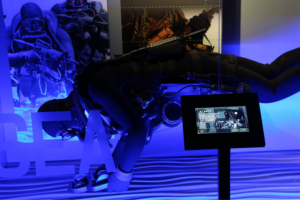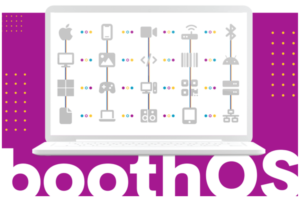When creating an immersive environment, you’re ultimately designing a space that tells a story—and one of the biggest challenges in storytelling is making sure your story resonates with a variety of audiences.
Whether you’re planning an event space, a museum exhibit, virtual experience, or beyond, you want to inspire your guests to think, feel, and do incredible things. To actually pull this off, you’ll need to meet your guests where they are. That is, you’ll need to learn:
- How do we speak the language of our guests?
- What do our guests value most?
- Where are they coming from and where are they going?
That’s already a tall order, but consider also, that no two visitors are the same!
Every individual will interpret your message differently, through the lens of their own personal context. How then can you create an experience with a message that resonates with diverse people from many different walks of life? The key is tackling this challenge from a layered design approach.
In her book Exhibit Labels: An Interpretive Approach, Beverly Serrell explains that layering exhibits means designing spaces that are “conceived as a series of layers, making information about the objects accessible to visitors of different backgrounds and interests.” In other words, we’re not talking about physically designing visual layers, but instead speaking to creating multiple conceptual layers of experiences within a space, that each resonate with a different subgroup of your audience. Different people should be able to enjoy the same exhibit, but in different ways, all while maintaining your strategic messaging for each group.
The best exhibits are multimodal, designed with layers of different experiences made for different people—all wrapped into one. A layered exhibit considers the range of your visitors’ different needs when it comes to understanding and experiencing your message. It’s important to understand that each subgroup will have different mental, emotional, and physical needs that will affect how your message translates. A great example of this would be exhibits that serve a range of different age groups.
In our work on Wonderland for the Dr. Sarah Jandrucko Academy for Early Learners, we needed to create an exhibit that would engage children with different backgrounds, different learning styles, and different levels of ability. Through layering, our designs enabled children to lead their own adventure, self-selecting the experiences that best resonated with their individual needs. In the experiential learning classroom, children made their own discoveries through hands-on exploration, authentic visualizations, and varied opportunities for all levels of cognitive and physical ability.
However, even the best application of layering can risk missing the mark if your message lacks strategic focus. While layering can help you to create experiences for many people, if you try to reach everyone at once then you diffuse your message and lose clarity and impact. Part of the secret to great layered experiences, is first identifying your best audience.
At Exhibit Concepts, we begin the process by collaborating with our clients and partners to understand their strategic objectives and messaging. We then create personas to determine the best audiences that align with those objectives. From there, we model how each of those audiences might perceive and interact with different designs and identify communication gaps and needs.
We design experiential environments using Universal Design for Learning and Accessibility and Americans with Disabilities Act best practices. Our goal is always to provide opportunities that allow visitors to take control of their own experience as they engage with the multisensory and interdisciplinary exhibit elements that best meet their unique needs.
Once key communication needs are established, our team then creates concept designs that layer main messages, potential themes, subthemes, and interactive strategies.
We can apply the lessons learned from layering across any immersive environment. Whether your challenge is creating a space for varied age groups or telling a story for an audience with diverse backgrounds, the layered exhibit approach can help make your message more accessible.
Want to make sure your message resonates?

Jamie Vandeberg
Jamie Vandeberg is Exhibit Concepts' Creative Director. He is a creative leader with a passion for design. Jamie first joined Exhibit Concepts in 1995. He then pursued other opportunities before returning in 2021. Jamie holds a degree in interior design from the University of Cincinnati.

Adam Wik
Adam Wik is a marketing, brand and communications professional with a passion for storytelling. Adam joined the Exhibit Concepts team in 2021 bringing 10 years experience working in marketing, public relations, and design. Adam holds degrees in business, marketing, and graphic design with concentrations in New Ventures and Customer Insight.









